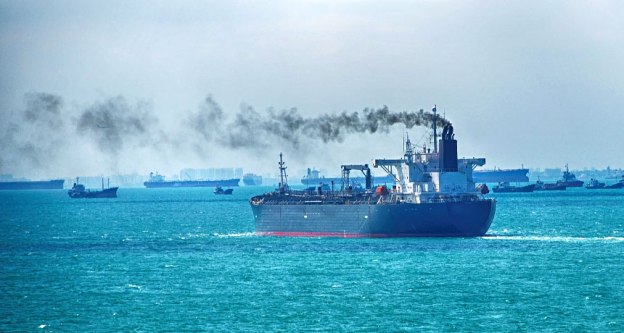Making shipping cleaner is made more urgent by the decision of the International Maritime Organisation (IMO), the United Nations body responsible for the world’s shipping, to reduce the amount of sulphur allowed in bunker fuel from 3.5% to 0.5% by 2020. Sulphur is nasty stuff. When burned, it forms sulphates, which cause acid rain and pollute the air. A paper published in February 2017 in Nature Communications, by Mikhail Sofiev of the Finnish Meteorological Institute, found that the imo’s new rule could stop between 139,000 and 396,000 premature deaths a year.
The trouble is that sulphates also scatter sunlight and help to form and thicken clouds, which reflect solar radiation away from Earth. As a result, shipping is thought to reduce rather than increase man-made global warming—by 7% throughout the 20th century, according to one study. Dr Sofiev’s research showed that this cooling effect could fall by 80% after 2020, with the new low-sulphur standard in place…
The obvious way to offset the loss of sulphur-related cooling is by steep cuts to shipping’s planet-cooking carbon-dioxide emissions. The IMO wants these to fall by half, compared with 2008 levels, by 2050, regardless of how many vessels then ply the seas. But unlike desulphurisation, which is both imminent and legally binding, the CO2 target looks fuzzy and lacks any enforcement mechanism. An attempt to begin fleshing it out, at a meeting of IMO member states which concluded in London on October 26, 2018 foundered.
One way to cut fuel consumption is to reduce drag by redesigning hulls and propellers. This is happening. In the past five or so years many ships’ propellers have been fitted with tip fins analogous to the turbulence-reducing upturned winglets on aeroplanes. Further percentage points can be shaved away by smoothing hulls. This means, in particular, stopping barnacles and other creatures growing on them. Tin-based antifouling paints are now banned as toxic to sea life, so paintmakers are returning to an 18th-century solution to the fouling problem—copper. Hulls can be scraped smooth, too, but restrictions on littering waters with paint chips and species from foreign parts have made such cleaning problematic. This may change, though, thanks to an underwater drone described by its Norwegian maker, ecosubsea, as “a cross between a vacuum cleaner and a lawnmower”. Rather than scour hulls with a metal brush, ecosubsea’s robots blast water at an angle almost parallel with the hull’s surface, which mostly spares paint from abrasion but hits marine growth perpendicularly, and thus hard.
Many have hopes of returning to wind propulsion, and engineers have devised various modern versions of the sail. None has yet succeeded. A system developed by SkySails, a firm in Hamburg, for example, relied on kites to pull ships along. It was installed on five ships from 2008-11, but proved fiddly to use and maintain…
Some hope to cut marine emissions by employing batteries and electric motors. For transoceanic shipping this looks a long-shot. But local shipping might benefit. Norway, for instance, has started to introduce battery-powered ferries. And a Dutch company called Port-Liner is building electric canal barges for transporting shipping containers. The technology is expensive. Without taxpayer subsidy it would hardly be a runner—a fact also true of the Norwegian ferries.
The problem of shifting emissions around rather than eliminating them also applies to the idea of powering ocean-going vessels using fuel-cells. These generate electricity by reacting hydrogen and oxygen together. Given that electric propulsion more usually disguises emissions than eliminates them, some suggest the most practical approach to reducing shipping’s contribution to global warming is to switch to low-carbon fuel systems rather than conducting a futile search for no-carbon fuels. One alternative is diesel-electric propulsion. Liquefied natural gas (lng) is another option.
Excerpts from Marine Technology of the Future: In Need for a Cean Up, Economist, Nov. 3, 2018, at 75
